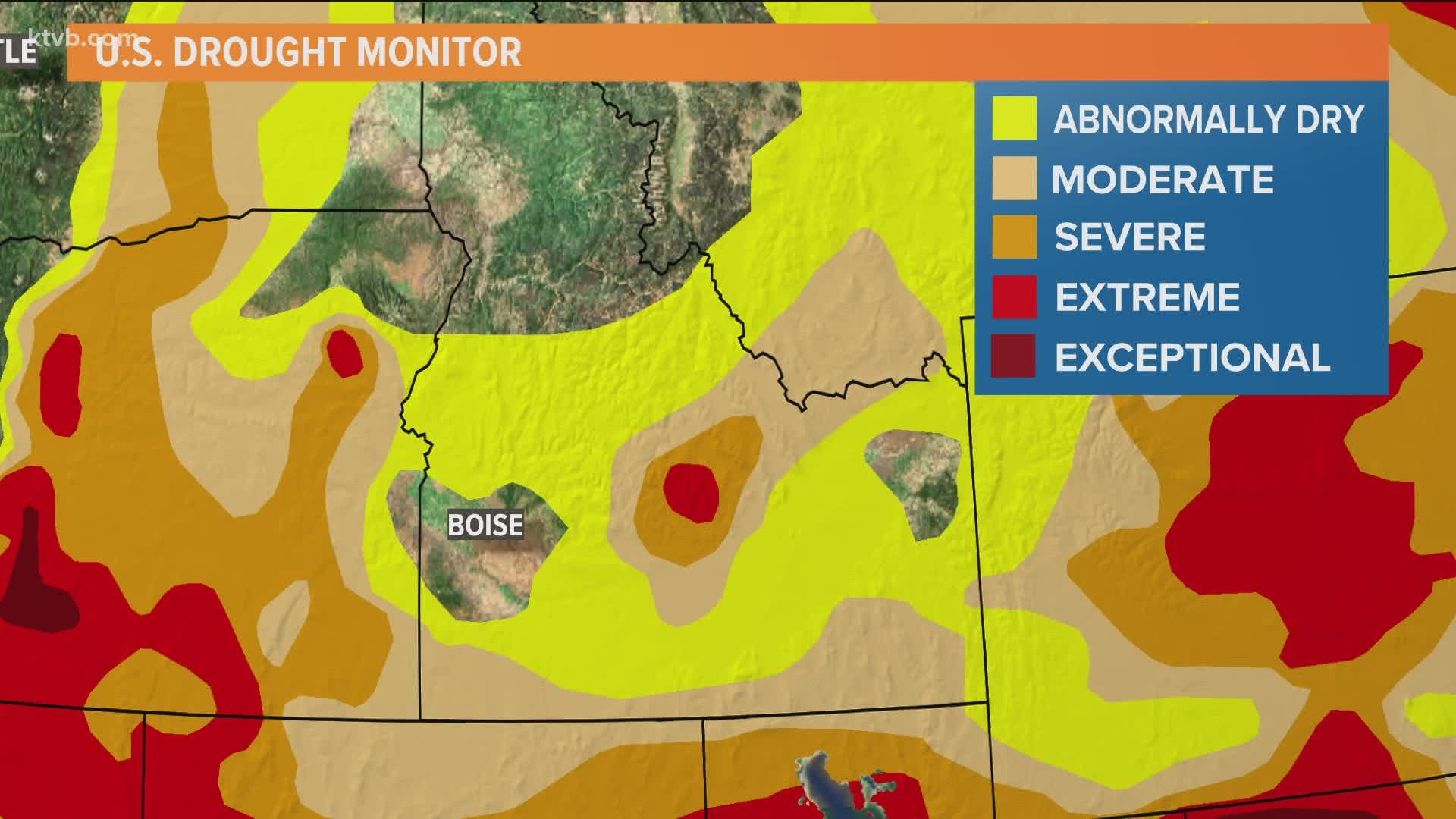BOISE, Idaho — Dry conditions in March and April has had a negative impact on Idaho’s water supply.
The final Idaho Water Supply Committee meeting of the winter/spring season was held Friday.
Hydrologist David Hoekema with the Idaho Department of Water Resources told the committee that 25 percent of Idaho is experiencing some level of drought.
The Pioneers Mountains are the epicenter of extreme drought in the Big Wood and Big Lost drainages, a drought pattern that goes back to 2019.
Idaho had a wet February, but when March came around and the storms turned off. Drought conditions are expected get worse this spring if dry weather persists.
Idaho’s chief meteorologist Rick Lantz says there is very little precipitation in the forecast over the next week, but we do need more rain and snow in the mountains. Temperatures will be on the rise next week and should be above normal.
There is expected to be water shortages in the Big Lost, Little Lost and Big Wood drainages because of below-normal snowpack. Snowpack levels dropped in March because of those dry conditions.
On Tuesday, Blaine County commissioners sent a letter to IDWR Director Gary Spackman requesting he issue a drought emergency declaration for the water year 2021. Irrigators are worried because snowpack levels are only around two-thirds of average in the Big Wood River and Little Wood River basins. Based on current streamflow predictions, Magic Reservoir will only have about 60 to 70 days of water. All this follows a below normal snow season in 2020.
In the Treasure Valley, the irrigation season is just getting underway.
Federal agencies started increasing flows on the Boise River on Wednesday to help meet initial irrigation diversions. Flows will gradually increase through Boise from approximately 250 to 500 cubic feet per second through April 15.
The Boise River is tracking below normal and is at its lowest level in five years, officials say.
In eastern Oregon, the soil is dry, so farmers need water to begin crowing their crops.
Ryan Hedrick, with the Snake River office of the Bureau of Reclamation, says the Boise River system is at 67% of capacity and may or may not fill, depending on spring precipitation.
He says right now "we're in the save mode" trying to fill the reservoirs.
The Payette River reservoir system may have a better chance of filling with more snowpack and higher-elevation snow in the mountains. Cascade Reservoir is 67% full, Deadwood Resevoir is 55% full and the Owyhee Reservoir is at 83% of average.
Snowpack in north Idaho is looking good. Many of the basins like the Clearwater are reporting more than 100% of normal.
Danny Tappa with the NRCS Snow Survey in Boise told the committee that 115 snow courses were measured across the state on April 1, including some manual lower-elevation snow courses.
After April 1, Idaho went into a melt phase has been losing snow in the first 8 days of the month. Overall, March precipitation was around 50% or less than normal statewide.
Here is the expected streamflow runoff based on moisture in the snowpack as of April 9:
• Middle Fork Salmon – 75% of normal
• Payette – 81%
• Boise – 79%
• Big Wood – 47%
• Snake – 81%
• Oakley inflow – 68%
NOAA forecasts look warmer and drier than normal over the next two weeks.

